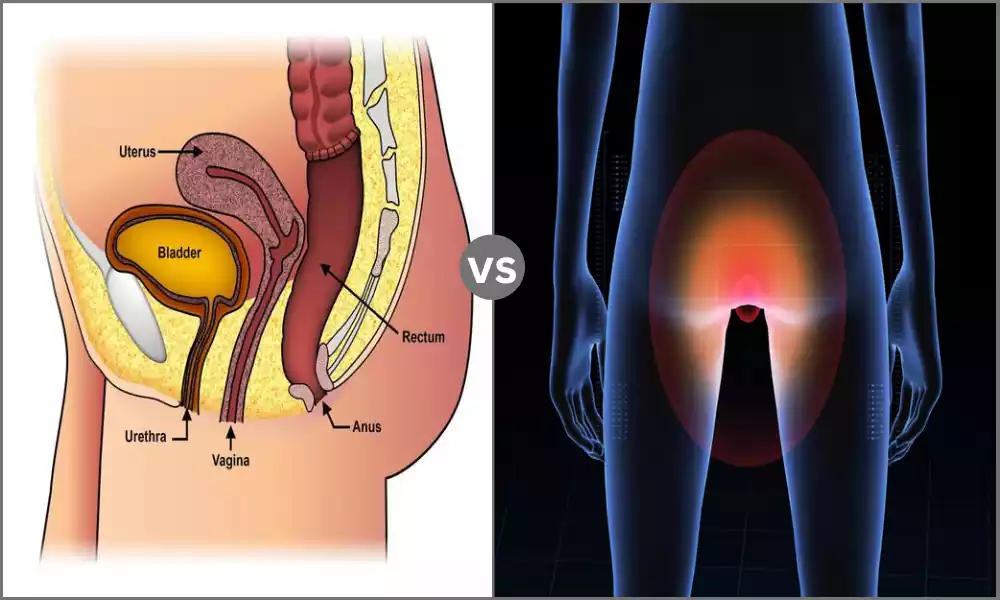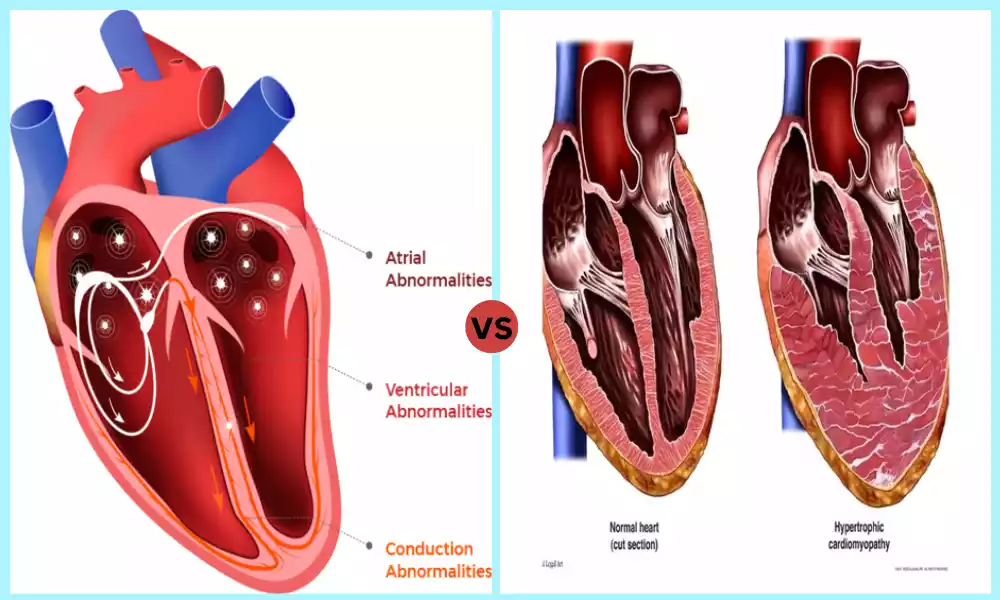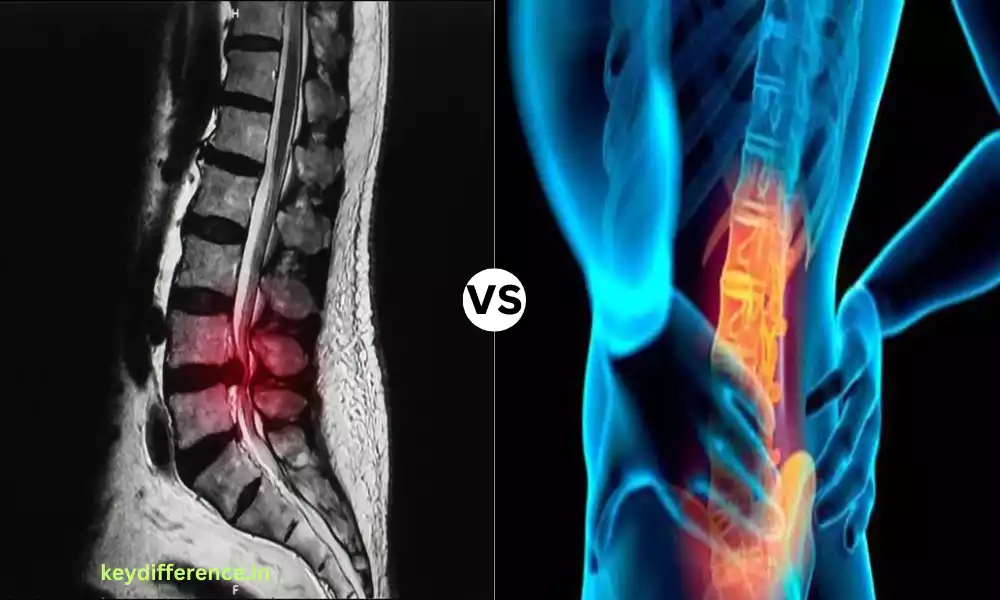Hypochondriasis and Somatization a distinct mental issues that often result from mistaken interpretations of physical sensations as well as health-related concerns. Although both are based on physical sensations, however, they differ in their focus, the underlying psychological processes, and the diagnostic criteria.
Understanding the differences is essential for medical professionals and those who seek help since it will aid in more accurate diagnoses and more customized treatment options.
We will dive deeper into the distinctions between hypochondriasis and somatization and hypochondriasis, examining their definitions and symptoms, as well as their causes, diagnoses, and treatments.
Explanation of Somatization
Somatization is a psychological process that causes people to display mental or emotional stress through physical complaints and symptoms. The physical symptoms are evident to the person who experiences these symptoms, but they typically do not have a medical explanation or an organic reason.
The term “somatogenesis” can refer to a broad variety of physical ailments such as fatigue, pain digestive disturbances, and numerous other bodily sensations that could significantly affect an individual’s living and performance.
It is defined by the ability to display emotions or psychological stress through physical discomfort, and also a concern with health issues that affect the body.

Explanation of Hypochondriasis
Hypochondriasis is now referred to as an illness Anxiety Disorder within the Diagnostic and Statistical Manual of Mental Disorders (DSM-5), is a mental health disorder that is characterized by an excessive level of worry anxiety, fear, and concern about the possibility of developing an illness that is serious and despite having only little medical evidence to back the claims.
People suffering from this disorder frequently mistakenly interpret normal bodily sensations as symptoms of a medical issue and often seek out reassurance from medical professionals or undergo a lot of medical tests.
The constant anxiety about health can severely impact a person’s everyday routine, resulting in frequent visits to the doctor, inconvenient medical procedures, and severe anxiety.
It is crucial to recognize that those suffering from Illness anxiety Disorder suffer from genuine anxiety due to their fear of being sick, even if their fears are not proportional to the real danger of developing serious medical conditions.

Comparison Table of Somatization and Hypochondriasis
Here’s a comparison table highlighting the key differences between Somatization and Hypochondriasis (Illness Anxiety Disorder):
| Characteristic | Somatization | Hypochondriasis (Illness Anxiety Disorder) |
|---|---|---|
| Focus of Concern | Physical symptoms and discomfort | Fear of having a severe illness |
| Perception of Symptoms | Actual physical symptoms experienced | Anxiety and preoccupation with perceived symptoms |
| Medical Seeking Behavior | Frequent doctor visits for physical complaints | Frequent doctor visits due to health anxiety |
| Diagnostic Criteria (DSM-5) | Part of the category “Somatic Symptom Disorders” | Classified as “Illness Anxiety Disorder” |
| Symptoms | Multiple, unexplained physical complaints – Chronic pain – Frequent somatic complaints – Emotional distress linked to physical symptoms – Often comorbid with mood and anxiety disorders | Excessive health-related anxiety – Persistent fear of having a serious illness – Frequent medical appointments – Catastrophic thinking – Excessive online research and self-diagnosis |
| Causes and Contributing Factors | Stress and emotional distress – History of trauma or abuse – Sociocultural influences (cultural beliefs) | Childhood experiences – Coping mechanisms – Sociocultural influences (media, internet) |
| Assessment and Diagnosis | Medical evaluation to rule out physical conditions Psychological evaluation for underlying issues | Psychological assessment tools Role of healthcare professionals in diagnosis |
| Treatment Approaches | Psychotherapy (Cognitive-Behavioral Therapy, Psychodynamic Therapy) – Medication (for comorbid conditions) – Mind-body interventions (yoga, meditation) | Cognitive-Behavioral Therapy (CBT) – Exposure therapy – Medication (for severe cases) – Multidisciplinary approach for severe cases |
| Prognosis and Outcomes | Outcomes influenced by early intervention and addressing underlying issues Relapse prevention strategies | Long-term effects of health anxiety Factors influencing treatment success |
This table provides a concise overview of the primary distinctions between somatization and hypochondriasis (Illness Anxiety Disorder) in terms of their focus, symptoms, causes, diagnosis, and treatment approaches.
Importance of understanding the differences between Somatization and Hypochondriasis
Understanding the difference between hypochondriasis and somatoform (Illness and anxiety disorder) is vital for a variety of reasons, which include:
- Accurate Diagnosis: Accurate diagnosis Healthcare professionals must precisely diagnose patients with the conditions in order to provide proper treatment. Incorrect diagnosis can result in inadequate or even harmful treatment.
- Tailored Treatment: The distinction between somatization and hypochondriasis permits the creation of individualized treatment strategies. Treatment strategies for these conditions could differ greatly, and knowing which condition is present is vital for effective treatment.
- Reducing Unnecessary Medical Interventions: Reduce the need for unnecessary medical interventions Both of these ailments can trigger an excessive amount of medical tests and procedures. Knowing the difference can aid in avoiding unnecessary medical procedures and cut down on the cost of healthcare.
- Alleviating Patient Distress: Helping to ease the stress of patients who suffer from hypochondriasis and somatization often suffer from severe stress. Correct diagnosis and treatment may result in relief from physical and psychological pain.
- Informing Patients: Ensuring that patients are aware of their medical condition can ease their anxiety and increase their ability to control their symptoms. It can also help facilitate better communication between healthcare professionals and patients.
- Addressing Underlying Issues: Treating the root of the issue Hypochondriasis and somatization may be co-morbid with mental health disorders. Understanding these distinctions can help doctors in dealing with mental health issues efficiently.
- Public Health Impacts: A precise diagnosis and treatment could contribute to improved overall health by lessening the strain on healthcare systems and making sure that the resources are efficiently allocated.
- Reduce Stigma: Misunderstanding or misclassifying people suffering from the conditions could perpetuate stigma. Understanding the distinctions can increase compassion and decrease the stigma that is associated with mental health issues.
- Research and Future Developments: Studies and future developments The clear distinction between somatization and hypochondriasis allows researchers to study these conditions independently which leads to a better understanding of the condition and possible advances in treatment.
Knowing the difference between hypochondriasis and somatization is vital to providing appropriate medical treatment, reducing the distress of patients, and improving overall health outcomes.
It is an essential step towards the most accurate diagnosis and efficient treatment for those suffering from these ailments.
Common medical conditions are often mistaken for somatization.
Many medical conditions may present with symptoms similar to symptoms of somatization, leading to a possibility of mistaken diagnosis. The conditions could have no obvious cause organically or be difficult to determine because of their unique or overlap in symptoms.
A few common medical conditions that are frequently misinterpreted as somatization are:
- Fibromyalgia: Fibromyalgia is a chronic pain condition that is characterized by a wide range of musculoskeletal pain tiredness, and tender points. Because the pain associated with fibromyalgia is usually not accompanied by physical signs and can be attributed to somatization.
- Chronic Fatigue Syndrome (CFS): CFS also referred to as myalgic-encephalomyelitis (ME) is characterized by severe exhaustion, sleeping disturbances along with cognitive loss. There is no clear biological cause may result in confusion as to whether it is a case of somatization.
- Irritable Bowel Syndrome (IBS): IBS is a gastrointestinal disorder that manifests as stomach pain bloating and changes in bowel movements. It can be confused with somatization, particularly if there isn’t any clear disease.
- Migraines: The migraine, which is chronic in nature could create intense, frequent headaches and can also cause symptoms such as nausea vomiting, and sensitivity to sound and light. The physical manifestations of these symptoms are sometimes confused with somatization.
- Complex Regional Pain Syndrome (CRPS): The chronic condition of pain that is which is characterized by extreme, frequently excessive pain, as well as changes in the color of skin and temperature. The variety and complexity of symptoms may result in incorrect diagnosis.
- Endometriosis: It is a gynecological disorder in which tissue that is similar to the lining of the uterus grows out of the uterus. It may cause persistent pelvic pain as well as other symptoms which could be mistaken for somatization, particularly when the diagnosis is delayed.
- Multiple Chemical Sensitivity (MCS): MCS is characterized by an extreme sensitivity to chemical compounds in the environment, which can cause symptoms like fatigue, headaches, and nausea. It’s a questionable diagnosis as some believe it to the somatization.
- Autoimmune Disorders: Conditions such as Lupus, Rheumatoid Arthritis, and Sjogren’s Syndrome can be characterized by a variety of symptoms that fluctuate and are not clear including joint pain and fatigue which could be misinterpreted as somatization.
- Lyme Disease: Lyme disease is a result of tick-borne bacteria that may cause a variety of symptoms, like joint pain, fatigue, and neurological issues. The varying and unspecific character of symptoms could occasionally lead to confusion in diagnosis.
- Hypothyroidism: A weak thyroid gland (hypothyroidism) may cause an increase in weight, fatigue, and depression. This can be mistakenly thought to be due to somatization.
It’s crucial to recognize that these disorders can co-occur with mental health issues or somatization, thereby causing more difficulty in the process of diagnosing.
Thus it is essential to conduct a thorough medical assessment and a thorough examination of physical and psychological aspects is essential for obtaining an accurate diagnosis and offering an appropriate treatment.
Differentiating hypochondriasis from genuine medical concerns
Distinguishing hypochondriasis (Illness Anxiety Disorder) from legitimate medical issues is essential to providing the appropriate treatment to people who are suffering from anxiety related to health.
Here are a few key elements and techniques to help distinguish between these two conditions:
- Objective medical evaluation: The initial step to distinguish hypochondriasis from genuine medical problems is to perform a thorough medical examination. It should comprise a complete medical history, physical examinations as well and appropriate imaging or laboratory tests. Evidence from medical experts can be used to rule out or reveal medical conditions that are real.
- Pattern and persistence: The most common cause of hypochondriasis is an excessive concern about various illnesses or shifting attention to different illnesses in the course. True medical issues usually involve constant symptoms that are related to an illness. The recurrence and the changing nature of health concerns could be a sign of hypochondriasis.
- Respond to Reassurance: Hypochondriasis sufferers frequently seek out reassurances from their healthcare professionals regardless of negative results from tests or medical opinions. Medical issues that are genuine could initially trigger an inquiry from a medical professional, however, once a diagnosis or explanation has been given, the fear usually decreases. The constant need for reassurance could be an indication of hypochondriasis.
- Health-related Behaviors: Hypochondriasis could result in excessive health-related behaviors like frequent doctor visits, unneeded tests for medical conditions or self-diagnosis using internet-based research. Individuals with medical conditions tend to adhere to the advice of a doctor and follow treatment plans without requesting a lot of more information or assurance.
- Impact on daily life: Hypochondriasis may significantly impact a person’s everyday living and function due to anxiety about health and worry. Medical issues that are genuine can be a factor but the effect is usually proportional in proportion to the degree of illness.
- Psychological assessment: Tools for assessing psychological health and consultations with an expert in mental health will help determine the signs of health anxiety and associated behaviors that could indicate hypochondriasis. These assessments can help uncover the root anxiety and fears that contribute to health issues.
- Time and Longevity: The condition is characterized by a persistent anxiety about health that lasts at least six months. True medical issues may disappear with treatment or time, while hypochondriasis can be expected to recur or persist.
- Reaction to Therapy: Hypochondriasis can respond to cognitive-behavioral treatment (CBT) as well as treatment for exposure, and medications that target anxiety or other symptoms. True medical conditions usually require particular medical interventions or treatments.
- Patient Information: Engaging in candid and understanding conversations with the patient may reveal insights into their emotions and psychological experience. Hypochondriasis patients may experience anxiety and fears which are unrelated to their medical illness.
- Multidisciplinary Methodology: Collaboration in care that involves both mental and medical health experts is crucial for effectively diagnosing and treating patients who suffer from health-related anxiety. Coordination of efforts will ensure that both psychological and medical aspects are properly addressed.
Distinguishing hypochondriasis from real medical conditions can be difficult and requires a patient-centric and holistic approach. It is essential to treat people with compassion and respect as well as provide the mental and physical assessments needed to determine the most suitable way to proceed.
Long-term effects of somatization and hypochondriasis
Hypochondriasis and somatization (now also known as the illness Anxiety Disorder as defined in DSM-5) may have long-lasting impacts on the physical, and psychological well-being, as well as social. These impacts can be severe and can vary based on the intensity and duration of ailments.
Here are some longer-term implications:
Long-term Effects of Somatization:
- Chronic Pain: Patients with somatization frequently experience persistent and unprovoked physical discomfort. As time passes, this can cause chronic discomfort and diminished the quality of their life.
- Healthcare Costs: Regular visits to the doctor as well as diagnostic tests and medical treatments can cause significant healthcare costs.
- Incorrect diagnosis and delayed treatment: Somatization may lead to misdiagnosis of the underlying medical conditions because of the emphasis only on the physical manifestations. Inadequate treatment for medical problems can lead to serious effects.
- impaired functioning: Chronic somatic complaints may hinder someone’s ability to participate in daily tasks, work, or keep relationships.
- Psychological Distress: The process of somatoformization is frequently associated with anxiety and mood disorders. Psychological distress that lasts for a long time can lead to anxiety and depression and a decrease in overall mental well-being.
- Dependence on healthcare providers: Continuous medical visits and reliance on medical professionals to provide reassurance can lead to dependency and hamper developing of self-management capabilities.
- Involvement in Relationships: Focusing too much on physical symptoms can sour relationships with friends and family and lead to social exclusion.
Long-term Effects of Hypochondriasis (Illness Anxiety Disorder):
- Healthcare Utilization: People suffering from anxiety or illness Disorder could continue to make use of medical services in excess, which can lead to a rise in healthcare costs as well as excessive use of medical resources.
- Stress and anxiety: The constant worry of developing a serious disease can lead to long-term anxiety and stress that can negatively impacting the mental well-being.
- Interference with daily life: Hypochondriasis can significantly interfere with daily activities and cause problems in working, social interactions and general level of living.
- Effects on Relationships: The constant health-related discussion and the need for reassurance may affect relationships with family members.
- Low quality of life: A constant focus on health and anxiety that is constant could result in a lower overall quality of life and satisfaction.
- Negative Effects on Physical Health: Stress and anxiety resulting from illness Anxiety Disorder may be detrimental to physical health including cardiovascular problems digestive issues, as well as impaired immune function.
- Limited Participation: Certain people with Illness Anxiety Disorder might avoid events and experiences because of their anxieties, leading to missing opportunities and experiences in life.
It is important to remember that both ailments are treatable with early intervention, which can aid in reducing some of these long-term consequences.
The use of cognitive-behavioral therapies (CBT) and exposure therapy, medication, and a multidisciplinary approach that involves mental health professionals as well as medical professionals are effective in addressing hypochondriasis and somatization.
Finding timely and effective treatment is crucial to improving the long-term results and overall health of those suffering from these ailments.
Similarities Between somatization and hypochondriasis
Hypochondriasis and somatization (now also known as the illness Anxiety Disorder) are two different psychological disorders However, they do share a few similarities, especially in the ways they manifest and affect people.
These are the commonalities among these two conditions:
- Concentration on physical symptoms: Both somatization and hypochondriasis are characterized by a concentration on physical symptoms and physical sensations. Patients suffering from these disorders often suffer from anxiety related to perceived physical health issues.
- Health-related Anxiety: Both of these conditions are marked by an increased level of anxiety and worry about health-related concerns. In the case of somatization, anxiety is connected to actual or perceived physical signs, and in hypochondriasis, it’s based on the fear of contracting a serious illness.
- medical utilization: Individuals with both illnesses are likely to seek medical care often typically visiting specialists or doctors to resolve their health issues. The excessive utilization of healthcare resources could be a common occurrence.
- Reassurance Inquiring: People with somatization and hypochondriasis typically seek assurance from their healthcare professionals or family members. They will often ask for medical examinations or advice to help ease their health-related anxiety.
- Impact on daily living: Both conditions can profoundly affect a person’s everyday activities, such as the workplace, social interactions and general performance. Health-related concerns can hinder the daily routine and obligations.
- Psychological Distress: People suffering from somatization or hypochondriasis typically experience extreme levels of psychological anxiety. This stress can cause signs of anxiety and depression which can further impede their overall wellbeing.
- Infuse with Additional Conditions: Somatization as well as hypochondriasis are able to co-exist with other mental health conditions like mood disorders, anxiety disorders, and obsessive-compulsive disorder (OCD).
- Chronicity: The two conditions are persistent and chronic that last for weeks or years if untreated.
- response to cognitive-behavioral therapy (CBT): Cognitive-behavioral therapy is a highly effective treatment method for both hypochondriasis as well as somatization. CBT aids individuals in recognizing and managing their health-related fears and behaviors.
It’s crucial to recognize that although there are some certain similarities, there are distinct differences between the two disorders, specifically in relation to their primary area of focus (physical symptoms as opposed to. anxiety about illness) and the diagnostic criteria.
A precise diagnosis by medical professionals is vital to distinguish between these two and to provide the proper treatment. Furthermore, a thorough evaluation must take into account both psychological and physical factors in order to establish a thorough understanding of the patient’s condition.
Reference Books
Certainly! Here are some reference books that cover various aspects of somatization, hypochondriasis (Illness Anxiety Disorder), and related topics in psychology and psychiatry:
- “Somatization and Psychosomatic Symptoms” by Allan A. Abbass
- This book provides an in-depth understanding of somatization and psychosomatic symptoms, offering insights into diagnosis and treatment.
- “Worried Sick: How Stress Hurts Us and How to Bounce Back” by Deborah Carr
- Examining the intersection of stress, physical health, and psychological well-being, this book touches on somatization and its effects on the body.
- “Hypochondriasis: Modern Perspectives on an Ancient Malady” edited by Vladan Starcevic and David Berle
- This edited volume explores hypochondriasis, its history, contemporary understanding, and various perspectives on its diagnosis and treatment.
- “Treatment of Functional Somatic Symptoms” by Giovanni A. Fava and David R. Hickie
- This book delves into treatment approaches for functional somatic symptoms, which encompass somatization and related conditions.
- “Cognitive-Behavioral Therapy for Hypochondriasis: A Treatment Manual” by Vladan Starcevic and Russell Noyes Jr.
- A practical guide for mental health professionals, this book offers a structured treatment program for hypochondriasis using cognitive-behavioral therapy.
Conclusion
Understanding the distinction between hypochondriasis and somatization (Illness and anxiety disorders) is vital to ensure a precise diagnosis and individualized treatment. Although these disorders share similarities with respect to physical signs and symptoms, they have distinct features as well as diagnostic requirements.
Understanding these distinctions can help healthcare professionals provide the appropriate treatment and support to ease the stress and impairments that people suffering from these ailments may suffer.
Intervention that is timely, whether cognitive-behavioral therapy, medication as well or a multidisciplinary strategy provides hope for better results and improved overall well-being for people affected by hypochondriasis and somatization.







